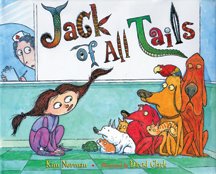
It's helpful when, say, you're researching picture books and you want to find out if they do lots of animal books, or books with cumulative structures. I'll often copy a chunk of a book's info page, including the cover art, then save it into a text file. I sometimes do that when I'm researching publishers who might be a fit for one of my manuscripts. You might not want to pitch to publishers who have produced a book which is TOO much like your current book, (say, a rhyming book about dancing kumquats), but if it's a publisher who does rhyming books, or books about anthropomorphic... er... fruits, you've got a better shot.
Sometimes it can be frustrating, finding a publisher which is a good fit without being TOO good a fit. In my crit group, we all laughed (instead of crying) over a rejection one of us received from Viking which said, "It's great, but we already have a book about blueberries."
Uh. Yeah. That would be Blueberries for Sal. Published SIXTY YEARS AGO. Seems like they could take a chance that kids who read it have moved on. Maybe when a book becomes an icon like Sal, publishers steer clear of ever touching such a subject again. Who knows.
But on the whole, it's a good thing to find houses which have previously published books similar to your own, and Amazon is a quick(-ish) way to do it. Once I've copied a few similar books into that text file, I store it in a folder with the manuscript, titled "Target markets for XYZ (title of the book.)"
Kim Norman





No comments:
Post a Comment